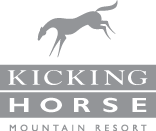Sorry, no posts matched your criteria.
×
cm | cm |
cm | cm |
UPPER MOUNTAIN | |||
|
| ||
HIGH | LOW | ||
LOWER MOUNTAIN | |||
|
| ||
HIGH | LOW | ||
/ | 81 | |
GROOMED | ||
/ | 145 | |
OPEN | ||
| ||||
| ELK QUAD CHAIR: | ||||
| TIMBER EXPRESS: | ||||
| BUY LIFT TICKETS | ||||




















